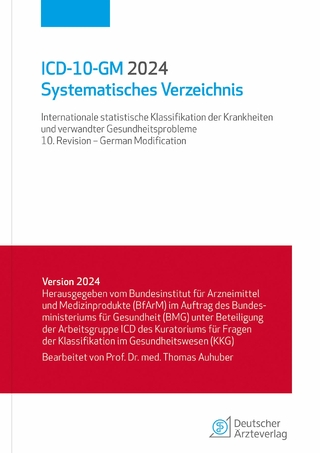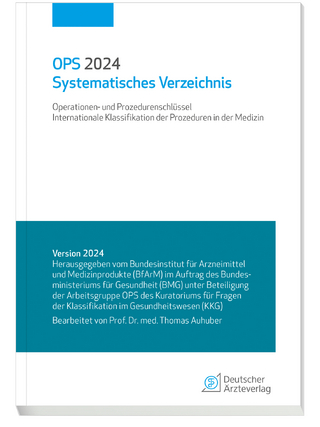
Microbial Diversity in the Genomic Era
Academic Press Inc (Verlag)
978-0-443-13320-6 (ISBN)
Prof. Surajit Das is currently working at the Department of Life Science, National Institute of Technology Rourkela, India. He received his doctoral degree in Marine Biology with specialization in microbiology from the Centre of Advanced Study in Marine Biology, Annamalai University, Tamil Nadu, India. He has been awarded the Endeavour Research Fellowship by the Australian Government to conduct postdoctoral research on marine microbial technology at the University of Tasmania. He has more than 15 years of research experience in environmental biotechnology, marine microbiology, bacterial biofilm, waste water treatment, and bioremediation. Prof. Das has maintained a strong commitment to explore the diversity of marine microorganisms from tropical, coastal, mangrove, and deep-sea environments using taxonomic and molecular tools. The main goal of his research is to understand the genetic regulation of bacterial biofilm for the improvement and development of biofilm-mediated bioremediation, thereby restoring the deteriorating environment as an eco-friendly approach. Dr. Hirak Ranjan Dash is an Assistant Professor of Forensic Biotechnology at the National Forensic Sciences University, Delhi Campus, India. He obtained his PhD degree in Life Science from the National Institute of Technology, Rourkela, India. Previously, he served as a DNA expert at Forensic Science Laboratory, Madhya Pradesh, India. His research interests include forensic microbiology, microbial phylogeny, forensic DNA analysis, genetic markers, and next generation sequencing. He has published 50 research papers and 9 books. He has previously received a research fellowship from the Indian Academy of Science. He is a pioneer in India working on NGS-based forensic DNA analysis. He is a life member of the Association of Microbiologists of India, International Society of Forensic Geneticists, and Asian Federation of Biotechnologists.
Section I: Overview of microbial diversity
1.1 Molecular tools for assessing bacterial diversity from natural environments
1.2 Importance of microbial diversity on health: tools to intervene in emerging and continuing diseases
1.3 Computational Tools for Whole Genome and Metagenome Analysis of NGS Data for Microbial Diversity Studies
1.4 Microbial community structure of the Sundarbans mangrove ecosystem
1.5 Assessment of evolution and diversity of rhizobia through genomic approach
1.6 Role of the microbial diversity in the constructed wetlands
Section II: Molecular tools in microbial diversity
2.1 Deriving Microbial Community Fingerprint from Environmental Samples using Advanced Molecular Fingerprinting Techniques
2.2 Planktonic and benthic archaea in brackish coastal lagoons; a case study using high-throughput amplicon sequencing from Chilika Lagoon, Odisha, India
2.3 Molecular tools in microbial diversity: Functional assessment for genomes and metagenomes by GenomapleTM
2.4 Exploration of Bacterial Alkaline Protease diversity in Chilika Lake Wetland Ecosystem
2.5 Metabolic reprogramming triggered by abiotic stress: A treasure-trove of bio-based technologies.
2.6 Recent molecular tools for analyzing microbial diversity in rhizosphere ecosystem
Section III: Extremophilic microbial diversity
3.1 Selection of the microbiome in the gut of Caenorhabditis elegans: a model for microbiome research
3.2 Assessment of microbial diversity in hot springs for their sustainable use
3.3 Disentangling the autotrophic thermophiles: concepts, diversity, and emerging trends
3.4 Exploring the microbial diversity in extreme acidic environment using molecular techniques
3.5 Microbial ecosystem that sustains indigo reduction under the anaerobic alkaline environment in indigo fermentation fluid
3.6 Diversity of extreme electroactive microorganisms and their bioelectrochemical applications
Section IV: Functional Microbial Diversity
4.1 Functional microbial diversity in the study of soils of various ecosystems
4.2 Advanced molecular tools in microbial community profiling in the context of bioremediation applications
4.3 Molecular structure and stress response diversity of ciliate metallothioneins.
4.4 Functional diversity of microbial catabolic genes for utilization in metal bioremediation
4.5 Functional microbial diversity: Functional genomics and metagenomics using GenomapleTM
4.6 Carbapenem-resistant Enterobacteriaceae: a clinical and environmental perspective on the Amazon region
4.7 Functional gene diversity and metabolic potential of uncultured bacteria
4.8 Analysis of microbial diversity to estimate post-mortem time intervals in cadavers
Section V: Microbial diversity and infectious diseases
5.1 Clinical and biological insights from sequencing of viral genome
5.2 Prevalence of Multidrug Resistances (MDRs) in environmental communities
5.3 Pathogenic microbial genetic diversity with reference to significant medical and public health
5.4 Functional applications of human microbiome diversity studies
5.5 Exploring plant-microbe interaction in the post genomic era: insight from diseases in rice and beyond
5.6 Microbial Diversity and Quorum Sensing Mechanisms in Infectious Bacteria
5.7 Insights into bacterial vaginosis: A metagenomic case controlled study
Section VI: Future directions of microbial diversity studies
6.1 Understanding the structure and function of landfill microbiome through genomics
6.2 Significance of upcoming technologies and their potential applications in understanding microbial diversity
6.3 Extremophile-Mediated Carbon Dioxide Sequestration
6.4 Molecular evolution of Xenobiotic-degrading genes and mobile genetic elements in soil bacteria
6.5 Whole genome sequencing and metagenomic approaches to study microbial diversity
6.6 Environmental antimicrobial resistant community analysis in wastewater and sediment: Cultural to molecular approaches
6.7 Applications of metagenomics in microbial bioremediation of pollutants: From genomics to environmental clean-up
| Erscheinungsdatum | 03.01.2024 |
|---|---|
| Verlagsort | San Diego |
| Sprache | englisch |
| Maße | 216 x 276 mm |
| Gewicht | 450 g |
| Themenwelt | Informatik ► Weitere Themen ► Bioinformatik |
| Studium ► Querschnittsbereiche ► Infektiologie / Immunologie | |
| Naturwissenschaften ► Biologie ► Biochemie | |
| Naturwissenschaften ► Biologie ► Genetik / Molekularbiologie | |
| Naturwissenschaften ► Biologie ► Mikrobiologie / Immunologie | |
| ISBN-10 | 0-443-13320-4 / 0443133204 |
| ISBN-13 | 978-0-443-13320-6 / 9780443133206 |
| Zustand | Neuware |
| Haben Sie eine Frage zum Produkt? |
aus dem Bereich


